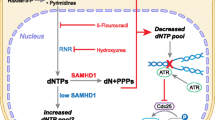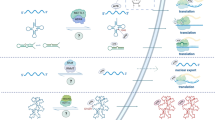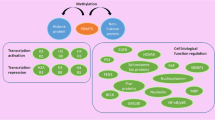Abstract
Hypoxanthine guanine phosphoribosyltransferase (HPRT) is a common salvage housekeeping gene with a historically important role in cancer as a mutational biomarker. As an established and well-known human reporter gene for the evaluation of mutational frequency corresponding to cancer development, HPRT is most commonly used to evaluate cancer risk within individuals and determine potential carcinogens. In addition to its use as a reporter gene, HPRT also has important functionality in the body in relation to purine regulation as demonstrated by Lesch–Nyhan patients whose lack of functional HPRT leads to significant purine overproduction and further neural complications. This regulatory role, in addition to an established connection between other salvage enzymes and cancer development, points to HPRT as an emerging influence in cancer. Recent work has shown that not only is the enzyme upregulated within malignant tumors, it also has significant surface localization within some cancer cells. With this is mind, HPRT has the potential to become a significant biomarker not only for the characterization of cancer, but also for its potential treatment.



Similar content being viewed by others
References
Goodchild J. Conjugates of oligonucleotides and modified oligonucleotides: a review of their synthesis and properties. Bioconjug Chem. 1990;1(3):165–87.
Kaziro Y, Itoh H, et al. Signal-transducing structure and function of GTP-binding proteins. Ann Rev Biochem 1991;60(1):349–400.
Schneider E, Hunke S. ATP-binding-cassette (ABC) transport systems: functional and structural aspects of the ATP-hydrolyzing subunits/domains. FEMS Microbiol Rev 1998;22(1):1–20.
Rajagopal L, Vo A, Silvestroni A, Rubens CE. Regulation of purine biosynthesis by a eukaryotic-type kinase in Streptococcus agalactiae. Mol Microbiol. 2005;56:1329–46. https://doi.org/10.1111/j.1365-2958.2005.04620.x.
Lane AN, Fan TW. Regulation of mammalian nucleotide metabolism and biosynthesis. Nucleic Acids Res. 2015. https://doi.org/10.1093/nar/gkv047.
LeLeiko NS, Bronstein AD, Baliga BS, Munro HN. De novo purine nucleotide synthesis in the rat small and large intestine: effect of dietary protein and purines. J Pediatr Gastroenterol Nutr. 1983;2(2):313–9.
Gross A, Lewis JM, George M. Practical synthesis of 5-phospho-D-ribosyl. alpha.-1-pyrophosphate (PRPP): enzymatic routes from ribose 5-phosphate or ribose. J Am Chem Soc. 1983;105(25):7428–35.
Tong X, Zhao F, Thompson CB. The molecular determinants of de novo nucleotide biosynthesis in cancer cells. Curr Opin Genet Dev. 2009. https://doi.org/10.1016/j.gde.2009.01.002.
Becerra A, Lazcano A. The role of gene duplication in the evolution of purine nucleotide salvage pathways. Orig Life Evol Biosph. 1998;28(4–6):539–53.
Stout JT, Caskey CT. Hprt: gene structure, expression, and mutation. Ann Rev Genet. 1985;19(1):127–48
Caskey CT, Kruh GD. (1979) The HPRT locus review. Cell 1979;16(1):1–9.
Wilson JM, Tarr GE, Kelley WN. Human hypoxanthine (guanine) phosphoribosyltransferase: an amino acid substitution in a mutant form of the enzyme isolated from a patient with gout. Proc Natl Acad Sci USA. 1983;80:870–3.
Eads JC, Xu Y, Grubmeyer C. The crystal structure with bound GMP of human phosphoribosyltransferase. Cell 1994;78:325–34.
Keough DT, Brereton IM, De Jersey J, Guddat LW. The crystal structure of free human hypoxanthine-guanine phosphoribosyltransferase reveals extensive conformational plasticity throughout the catalytic cycle. J Mol Biol. 2005;351:170–81. https://doi.org/10.1016/j.jmb.2005.05.061.
Zhang N, Gong X, Lu M, et al. Crystal structures of Apo and GMP bound hypoxanthine—guanine phosphoribosyltransferase from Legionella pneumophila and the implications in gouty arthritis. J Struct Biol. 2016. https://doi.org/10.1016/j.jsb.2016.03.007.
Fuscoe JC, Fenwick IRG, Ledbetter IDH, Caskey CT. Deletion and amplification of the HGPRT locus in Chinese hamster cells. Mol Cell Biol 1983;3:1086–96.
Wilson JM, Tarrt GE, Kelley WN. Human hypoxanthine (guanine) phosphoribosyltransferase: an amino acid substitution in a mutant form of the enzyme isolated from a patient with gout. Proc Natl Acad Sci USA. 1983;80:870–3.
Kim SH, Moores JC, David D, et al. The organization of the human HPRT gene. Nucleic Acids Res. 1986;14:3103–18.
Melton DW, Mcewan C, Reid AM, Mckie B. Expression of the mouse HPRT gene: deletional analysis of the promoter region of an X-chromosome linked housekeeping gene. Cell 1986;44:319–28.
Caskey CT. In vitro translation of hypoxanthine/guanine phosphoribosyltransferase mRNA: characterization of a mouse neuroblastoma cell line that has elevated levels of hypoxanthine/guanine phosphoribosyltransferase protein. Proc Natl Acad Sci USA. 1981;78:6977–80.
Zoref-Shani E, Frishberg Y, Bromberg Y. Kelley-Seegmiller syndrome due to a unique variant of hypoxanthine-guanine phosphoribosyltransferase: reduced affinity for 5-phosphoribosyl-1-pyrophosphate manifested only at low, physiological substrate concentrations. BBA Mol Basis Dis. 2000;1500:197–203.
Nyhan WL, Diego S. (2012) Lesch–Nyhan syndrome. Wiley, Chichester, pp. 1–6. https://doi.org/10.1002/9780470015902.a0001457.pub2.
Kostalova E, Pavelka K, Vlaskova H, et al. Hyperuricemia and gout due to deficiency of hypoxanthine—guanine phosphoribosyltransferase in female carriers: new insight to differential diagnosis.. Clin Chim Acta. 2015;447:121. https://doi.org/10.1016/j.cca.2015.04.018.
Miller AD, Jollyt DJ, Friedmannt T, Verma IM. A transmissible retrovirus expressing human hypoxanthine phosphoribosyltransferase (HPRT): gene transfer into cells obtained from humans deficient in HPRT Proc Natl Acad Sci USA. 1983;80:4709–13..
Rcas JOMA, Uño ANSB, Eill PAON. The spectrum of hypoxanthine-guanine phosphoribosyltransferase (HPRT) deficiency clinical experience based on 22 patients from 18 Spanish families. Medicine 2001;80:102–12.
Seegmiller JE, Rosenbloom FM, Kelley WN. Enzyme defect associated with a sex-linked human neurological disorder and excessive purine synthesis. Science 2016;155:1682–4.
Torres RJ, Puig JG. Hypoxanthine-guanine phosphoribosyltransferase (HPRT) deficiency: Lesch-Nyhan syndrome. Orphanet J Rare Dis 2007;10:1–10. https://doi.org/10.1186/1750-1172-2-48.
Wilson JM, Stout JT, Palella TD, Davidson BL, Kelley WN, Caskey CT. A molecular survey of hypoxanthine-guanine phosphoribosyltransferase deficiency in man. J Clin Invest. 1986;77(1):188–95
Jagarlamudi KK, Hansson LO, Eriksson S. Breast and prostate cancer patients differ significantly in their serum Thymidine kinase 1 (TK1) specific activities compared with those hematological malignancies and blood donors: implications of using serum TK1 as a biomarker. BMC Cancer. 2015. https://doi.org/10.1186/s12885-015-1073-8.
Alegre MM, Grose J. Thymidine kinase 1: diagnostic and prognostic significance in malignancy, Doctoral dissertation, Brigham Young University, Provo; 2013.
Aufderklamm S, Todenhöfer T, Gakis G, et al. Thymidine kinase and cancer monitoring. Cancer Lett. 2012;316:6–10. https://doi.org/10.1016/j.canlet.2011.10.025.
Li HX, Lei DS, Wang XQ, et al. Serum thymidine kinase 1 is a prognostic and monitoring factor in patients with non-small cell lung cancer. Oncol Rep. 2005;13:145–9..
O’Neill KL, Zhang F, Li H, et al. Thymidine kinase 1—a prognostic and diagnostic indicator in ALL and AML patients. Leukemia 2007;21:560–3. https://doi.org/10.1038/sj.leu.2404536.
He Q, Zou L, Zhang PA, et al. The clinical significance of thymidine kinase 1 measurement in serum of breast cancer patients using anti-TK1 antibody. Int J Biol Mark. 2000;15:139–46.
Nisman B, Allweis T, Kadouri L, et al. Comparison of diagnostic and prognostic performance of two assays measuring thymidine kinase 1 activity in serum of breast cancer patients. Clin Chem Lab Med. 2013;51:439–47. https://doi.org/10.1515/cclm-2012-0162
Carlsson L, Larsson A, Lindman H. Elevated levels of thymidine kinase 1 peptide in serum from patients with breast cancer. Ups J Med Sci. 2009;114:116–20. https://doi.org/10.1080/03009730802688835.
Bolayirli M, Papila C, Korkmaz GG, et al. Serum thymidine kinase 1 activity in solid tumor (breast and colorectal cancer) patients treated with adjuvant chemotherapy. J Clin Lab Anal. 2013;226:220–6. https://doi.org/10.1002/jcla.21587.
Alegre MM, Weyant MJ, Bennett DT, et al. Serum detection of thymidine kinase 1 as a means of early detection of lung cancer. Anticancer Res. 2014;34:2145–52.
Zhang F, Li H, Pendleton AR, et al. Thymidine kinase 1 immunoassay: a potential marker for breast cancer. Cancer Detect Prev. 2001;25:8–15.
He E, Xu XH, Guan H, et al. Thymidine kinase 1 is a potential marker for prognosis and monitoring the response to treatment of patients with breast, lung, and esophageal cancer and non-Hodgkin’s lymphoma. Nucleosides Nucleotides Nucleic Acids. 2010;29:352–8. https://doi.org/10.1080/15257771003738535.
Chang Y-J, Tseng C-Y, Lin P-Y, et al. Acute exposure to DEHP metabolite, MEHP cause genotoxicity, mutagenesis and carcinogenicity in mammalian Chinese hamster ovary cells. Carcinogenesis 2017;38:336–45. https://doi.org/10.1093/carcin/bgx009.
Gobrecht J, McDyre C, Comotto J, Reynolds M. Induction of cytotoxic and genotoxic damage following exposure of V79 cells to cadmium chloride. Mutat Res Toxicol Environ Mutagen. 2017;816–817:12–7. https://doi.org/10.1016/j.mrgentox.2017.03.001.
Grist S, McCarron M, Kutlaca A, et al. In vivo human somatic mutation: frequency and spectrum with age. Mutat Res. 1992;266:189–96. https://doi.org/10.1016/0027-5107(92)90186-6.
Hirota H, Kubota M, Hashimoto H, et al. Analysis of hprt gene mutation following anti-cancer treatment in pediatric patients with acute leukemia. Mutat Res Toxicol. 1993;319:113–20.
Robinson DR, Albertini RJ, Neill O, Finette B, Sala-trepat M, Moustacchi E, et al. An analysis of in vivo hprt mutant frequency in circulating T-lymphocytes in the normal human population: a comparison of four datasets. Mutat Res. 1994;313:227–47.
Strauss GH, Albertini RJ. Enumeration of 6-thioguanine-resistant peripheral blood lymphocytes in man as a potential test for somatic cell mutations arising in vivo. Mutat Res Mol Mech Mutagen. 1979;61:353–79. https://doi.org/10.1016/0027-5107(79)90140-4.
Albertini RJ, Castle KL, Borcherding WR. T-cell cloning to detect the mutant 6-thioguanine-resistant lymphocytes present in human peripheral blood. Proc Natl Acad Sci USA. 1982;79:6617–21. https://doi.org/10.1073/pnas.79.21.6617.
Compton PJE, Hooper K, Smith MT. Human somatic mutation assays as biomarkers of carcinogenesis. Environ Health Perspect. 1991;94:135–41.
Albertini RJ. HPRT mutations in humans: biomarkers for mechanistic studies. Mutat Res Rev Mutat Res. 2001;489:1–16.
Hou S, Yang K, Nyberg F, et al. Hprt mutant frequency and aromatic DNA adduct level in non-smoking and smoking lung cancer patients and population controls. Carcinogenesis 1999;20:437–44.
Branda RF, Sullivan LM, O’neill JP, Falta MT, Nicklas JA, Hirsch B, Vacek PM, Albertini RJ, Vacek PM, Albertini RJ. Measurement of HPRT mutant frequencies in T-lymphocytes from healthy human populations. 1993;285:267–79.
Sawada M, Kubota M, Lin YW, Watanabe K, Koishi S, Usami I, et al. Prospective study of mutant frequencies at the hprt and T-cell receptor gene loci in pediatric cancer patients during chemotherapy. Cancer Epidemiol Biomarkers. 1998;7:711–7.
Sawada M, Kubota M, Lin Y, Watanabe K. Evaluation of mutant frequencies at the hprt and the T-cell receptor loci in pediatric cancer patients before treatment. Mutat Res Fundam Mol Mech Mutag 1998;397(2):337–43.
Branda RF, O’Neill JP, Jacobson-Kram D, Albertini RJ. Factors influencing mutation at the hprt locus in T-lymphocytes: studies in normal women and women with benign and malignant breast masses. Environ Mol Mutagen. 1992;19:274–81.
Cheng T, Christiani DC, Liber HL, Wain JC, Xu X, Wiencke JK, et al. Mutant frequency at the hprt locus in human lymphocytes in a case-control study of lung cancer. Mutat Res Mol Mech Mutag. 1995;332:109–18.
Duthie SJ, Collins R. (1995) The influence of smoking and diet on the hypoxanthine phosphoribosyltransferase mutant frequency in circulating T lymphocytes from a normal human population. Mutat Res Mol Mech Mutag. 1995;331:55–64.
Hakoda M, Akiyama M, Kyoizumi S, Awa AA. Increased somatic cell mutant frequency in atomic bomb survivors. Mutat Res Mol Mech Mutag. 1988;201:39–48.
Tates AD, Van Dam FJ, Natarajan AT, Zwinderman AH, Osanto S. Frequencies of HPRT mutants and micronuclei in lymphocytes of cancer patients under chemotherapy: a prospective study. Mutat Res. 1994;307:293–306.
Glaab WE, Tindall KR. Mutation rate at the hprt locus in human cancer cell lines with specific mismatch repair-gene defects. Carcinogenesis 1997;18:1–8.
Homey B, Soto H, Ge N, Catron D, Buchanan ME, Mcclanahan T, et al. Involvement of chemokine receptors in breast cancer metastasis. Nature 2001;410:50–6.
Townsend MH, Felsted AM, Ence ZE, Piccolo SR, Robison RA, O’Neill KL. Elevated expression of hypoxanthine guanine phosphoribosyltransferase within malignant tissue. Cancer Clin Oncol. 2017;6:19.
Townsend MH, Anderson MD, Weagel EG, Velazquez EJ, Weber KS, Robison RA, et al. Non-small-cell lung cancer cell lines A549 and NCI-H460 express hypoxanthine guanine phosphoribosyltransferase on the plasma membrane. Onco Targets Ther. 2017;10:1921–32.
Author information
Authors and Affiliations
Corresponding author
Ethics declarations
Conflict of interest
All the authors declare that they have no conflict of interest.
Research involving human and animal participants
This article does not contain any studies with animals performed by any of the authors.
Rights and permissions
About this article
Cite this article
Townsend, M.H., Robison, R.A. & O’Neill, K.L. A review of HPRT and its emerging role in cancer. Med Oncol 35, 89 (2018). https://doi.org/10.1007/s12032-018-1144-1
Received:
Accepted:
Published:
DOI: https://doi.org/10.1007/s12032-018-1144-1




